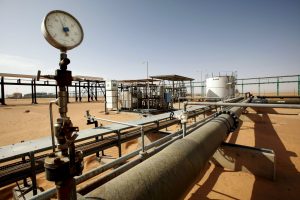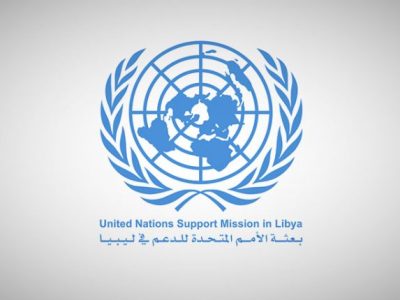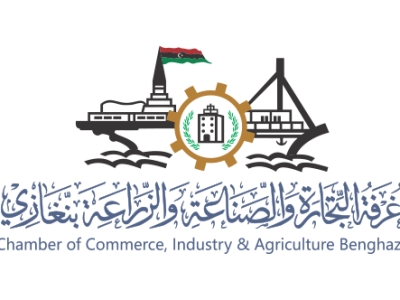Libya Economic Revival: From Oil-Driven Growth to Diversification
Libya’s economy has shown signs of revival over the past few years, rebounding strongly in 2023 and 2024 on the back of a more stable oil output. After a sharp recession in 2022, real GDP grew by an estimated 12.6% in 2023 as oil production was sustained under improved security conditions. The hydrocarbon sector remains the backbone of Libya’s economy, accounting for about 97% of export earnings, over 90% of government revenue, and roughly two-thirds of GDP. This overwhelming dependence on oil and gas means that economic fortunes are tightly linked to the volume of oil Libya can pump and the global price of crude.
Oil production has been volatile in recent years due to conflict and infrastructure issues. Before 2011, Libya produced around 1.6-1.7 million barrels of oil per day, but a decade of political strife caused a steep decline with frequent disruptions. Thanks to a ceasefire in 2020, output recovered to about 1.2 million barrels per day in 2021-2023. However, in 2024 fresh turmoil struck: a dispute between rival authorities over Central Bank leadership triggered blockades of oil fields and ports in August, sending production plunging below 600,000 barrels per day. A resolution was reached by October – including an interim Central Bank governor acceptable to both sides – and the National Oil Corporation (NOC) lifted force majeure, allowing output to rebound quickly. This episode underscored how fragile political stability is critical for oil operations: any renewed tensions risk undermining production and, by extension, the broader economy.
Despite 2024’s mid-year setback, oil revenues have been sufficient to keep Libya’s fiscal and external accounts in relatively positive territory. In 2023, higher oil output offset softer global oil prices, yielding an estimated $30 billion in net oil export revenues. The current account surplus, which had been in double-digits as a share of GDP, narrowed as oil prices eased, and the fiscal surplus nearly evaporated to just 0.1% of GDP in 2023. Libya’s Central Bank – now formally reunified with its eastern branch as of August 2023 – reports robust foreign currency reserves of about $82 billion (over four years of import cover). These reserves and minimal public debt provide an important buffer for macroeconomic stability. Still, the latest IMF assessment notes that 2024 saw a swing into modest fiscal and current account deficits, due to the temporary oil shutdown and continued high public spending. Inflation remains low (around 1.5% as of April 2025), thanks in part to extensive subsidies on food and fuel that suppress consumer prices.

The Oil and Gas Sector: Lifeline and Constraints
Hydrocarbons will remain the engine of Libya’s economy in the near term. In 2023, the oil and gas sector represented about 60-70% of GDP and over 93% of export value, a level of concentration unrivaled in the region. Libya holds Africa’s largest proven oil reserves (around 48 billion barrels) and was the continent’s third-largest oil producer last year. The NOC has ambitious plans to boost crude output to 1.5 million barrels per day and beyond, and foreign investors are tentatively returning. Notably, Italy’s Eni signed a $8 billion deal in 2023 to develop offshore gas fields – a 25-year project expected to produce up to 800 million cubic feet of gas per day, alongside new solar energy installations. This major investment, the largest in Libya’s energy sector in decades, signals confidence that production can expand if stability endures. Gas exports are seen as a growth area, catering to European markets seeking alternative suppliers, and dovetail with efforts to introduce renewable energy.
At the same time, Libya’s oil sector faces structural constraints. Years of conflict and under-investment have left infrastructure in need of modernization, and production is frequently interrupted by strikes or security problems. Maintenance issues and a lack of storage capacity also cap output below potential. The goal of restoring pre-2011 production levels will require not only peace, but also significant upgrades and exploration – tasks that depend on foreign technical expertise and capital, which in turn hinge on a stable political environment. Oil revenues have been both a blessing and a curse: while providing Libya with one of the highest GDPs per capita in Africa, the easy oil money has historically delayed diversification and fueled patronage in the public sector. As the energy transition accelerates worldwide, our nation’s heavy reliance on hydrocarbons poses long-term risks, making economic diversification an urgent priority according to analysts.
Fiscal Policy and Institutional Challenges
Decades of oil dependence have shaped Libya’s public finances. Government spending is dominated by public sector salaries, subsidies, and transfers, which together consume the bulk of oil income. Development expenditures have been comparatively neglected – a trend exacerbated by political fractures. Libya still lacks a unified national budget, with rival administrations in east and west often conducting separate fiscal operations. This has complicated fiscal planning and investment. The International Monetary Fund has urged Libya to establish a single, transparent budget and to rein in its public wage bill and subsidy programs, which are considered unsustainably large. In June, the IMF reported that “both the fiscal and current accounts swung from surplus in 2023 to deficit in 2024” as oil revenues dipped, and it warned that Libya remains “heavily exposed to global oil market volatility” and domestic disruptions.
The Fund recommends gradually phasing out generalized subsidies and adopting a more targeted social safety net, alongside boosting non-oil revenue streams to stabilize public finances. It also noted the need to unify the exchange rate and strengthen financial governance to reduce distortions in the economy.
On a positive note, the reunification of the Central Bank of Libya (CBL) in 2023 and improvements in banking supervision are steps toward better economic governance. The banking sector increased its capital buffers in line with international standards, and non-performing loan ratios have started to improve after earlier spikes. However, lending to the private sector remains limited, and access to finance is a major hurdle for businesses. As IMF staff observed in their latest review, “the lack of access to finance and foreign currency, dominance of public employment, and poor governance are major impediments to growth in Libya”. Indeed, the economy is still largely state-driven: the public sector employs a majority of the labor force, and many citizens rely on the state either for jobs or welfare. This model is difficult to sustain without high oil revenues, and it crowds out private enterprise. Unemployment hovers around 19% (as of 2022) and is especially severe among youth at over 50%, reflecting the scarcity of dynamic new industries to absorb a young workforce.
Non‑Oil Sectors and Diversification Efforts
Beyond hydrocarbons, Libya’s non-oil sectors remain underdeveloped, contributing only a small fraction of national output. The industrial sector is almost entirely oil-related – manufacturing accounted for just 4% of GDP and agriculture under 3% in recent years. Paradoxically, agriculture employs about 9% of Libyans and services around 70%, despite their modest output shares. This mismatch points to very low productivity and an economy where many jobs are effectively make-work positions supported by oil rents. Key non-oil industries include construction, trade, and government services. Some light manufacturing exists (such as cement and food processing), but conflict has deterred substantial investment in factories. Tourism, which could capitalize on Libya’s rich history and Mediterranean coast, is virtually nil at present due to security concerns. Overall, the private sector is embryonic – the World Bank notes that Libya must “prioritize non-oil sectors and encourage private sector-led growth” to create jobs and improve living standards. And they’re right.
Diversification efforts have been discussed for decades but with limited progress. The obstacles are as much political as economic. Institutional capacity is a major constraint: over the last decade, policy coordination has been weak and reform initiatives often stalled by factional interests. The African Development Bank observes that structural transformation has been “hindered by limited political will and… more than a decade of conflict,” which has paralyzed many sectors and scared off investors. In this environment, entrepreneurs face numerous challenges from bureaucratic red tape to difficulties obtaining credit and foreign exchange.
Nevertheless, there are some nascent positives. The unity government formed in 2021 had set up programs to improve the business climate and attract investment, such as revising the investment law and planning reconstruction projects. Libya’s reconstruction needs are substantial – especially after the devastating floods in the east in September 2023, which killed thousands and destroyed infrastructure. A joint assessment by the World Bank, UN, and EU estimated the flood disaster caused $1.65 billion in damage and economic losses (about 3.6% of GDP) and identified roughly $1.8 billion in immediate rebuilding needs. Rebuilding roads, housing, and public utilities in affected cities like Derna and Benghazi could provide a stimulus to the construction sector and supply chains, if funded and managed effectively. Likewise, investment in Libya’s electricity grid and renewable energy (solar and wind potential is high) would not only address chronic power shortages but also create private business opportunities. International energy companies, through deals like Eni’s, are beginning to incorporate renewable components (e.g. solar plants) alongside traditional oil and gas projects – a sign that Libya could leverage its natural advantages (ample land and sunshine) in a future decarbonizing world.
Outlook: Cautious Optimism with Conditions
The outlook for Libya’s economy is highly contingent on political and security stability. If the tentative peace holds, economists project a strong rebound in growth as oil production normalizes. The World Bank forecasts that Libya’s GDP will expand by nearly 10% by the end of the year. The IMF likewise expects a rebound next year, but then a moderation to modest growth over the medium term, assuming oil production reaches capacity and then plateaus. In essence, once Libya’s post-conflict oil surge is complete, future growth will depend on developing other sectors. Diversifying the economy is imperative to reduce vulnerability to oil price swings and to generate employment. “In the medium term, Libya faces the challenge of diversifying its economy and reducing its reliance on hydrocarbons. Stability and improved governance will be fundamental to Libya’s economic recovery,” said Ahmadou Moustapha Ndiaye, the World Bank’s country director for Libya. That improved governance includes holding long-delayed national elections and unifying state institutions – steps that could unlock greater investor confidence.
Encouragingly, Libya is an upper-middle-income country by per capita metrics, and it possesses the financial resources to fund its own development if those funds are directed wisely. Official data shows Libya’s per capita GDP is still only two-thirds of its 2010 level, reflecting the deep losses from conflict. The World Bank estimates that cumulative instability since 2011 has cost the country around $600 billion – and that Libya’s GDP in 2023 would have been 74% higher in the absence of conflict. These figures highlight both the enormous damage done and the vast potential upside if peace and order can be maintained. Apart from political reconciliation, Libya will need to modernize its economic management. That includes investing in infrastructure (roads, water systems, telecommunications), reforming subsidies and public employment to free up resources for development, and promoting entrepreneurship to broaden the production base.
Strengthening the rule of law and anti-corruption measures will also be vital to foster a healthy business climate.
In sum, Libya’s economy stands at a crossroads. The year 2024 demonstrated both the promise and the peril facing the country: oil-fueled growth when conditions are calm, but quick reversals when discord strikes. Looking ahead, a sustained recovery will require breaking the old pattern. Prudent use of oil wealth – channeling it into rebuilding and diversification – could set the stage for more balanced growth. Key sectors like agriculture, manufacturing, and tourism will not flourish overnight, but gradual gains are possible with stability and strategic investment. For now, hydrocarbons will continue to drive Libya’s fortunes, but there is a growing recognition in Tripoli and beyond that the status quo is untenable.
By adopting reforms and embracing a more diversified economic model, Libya can transform its abundant natural resources into lasting prosperity for its people, rather than a source of recurring instability. The coming years will be critical to determine whether the country can capitalize on the current window of relative peace to lay a new foundation for inclusive, sustainable growth.




